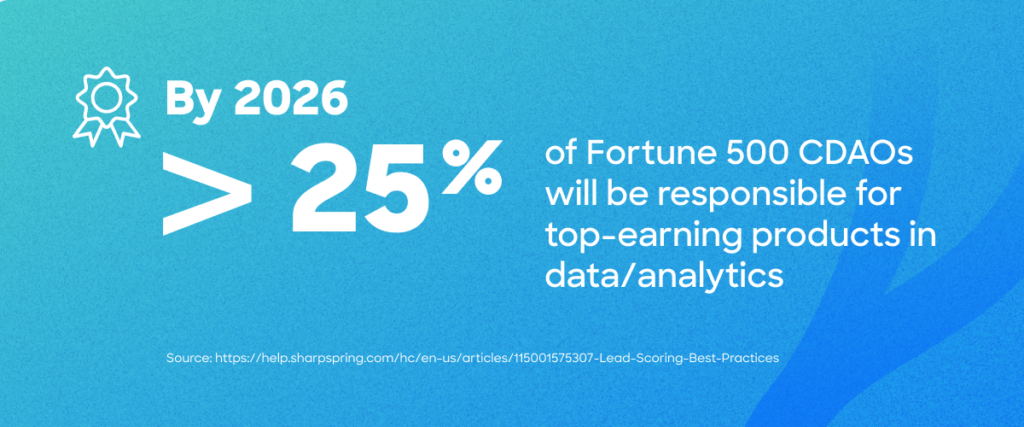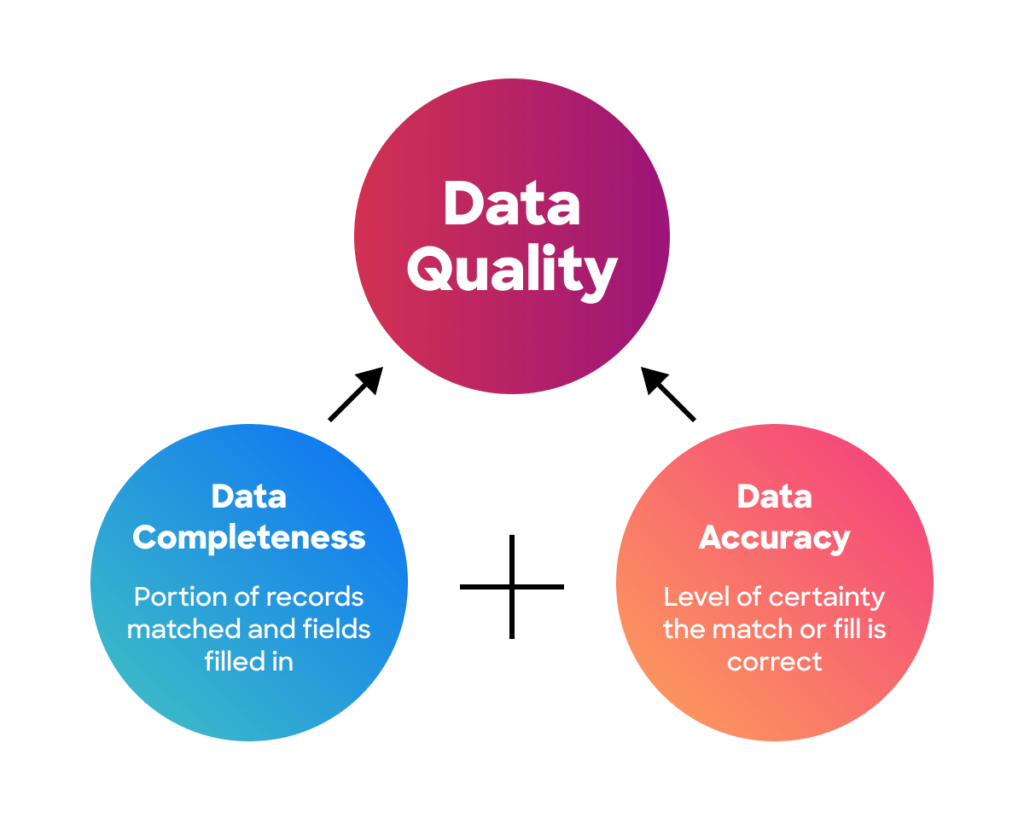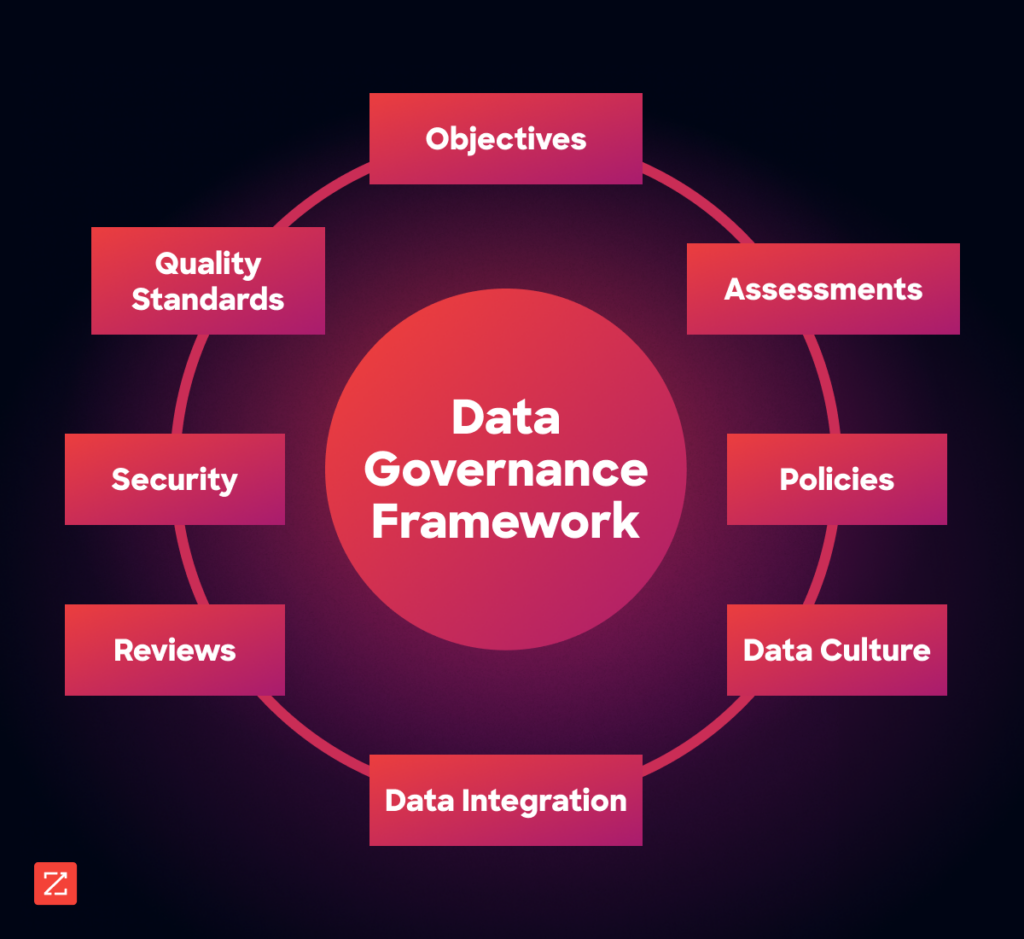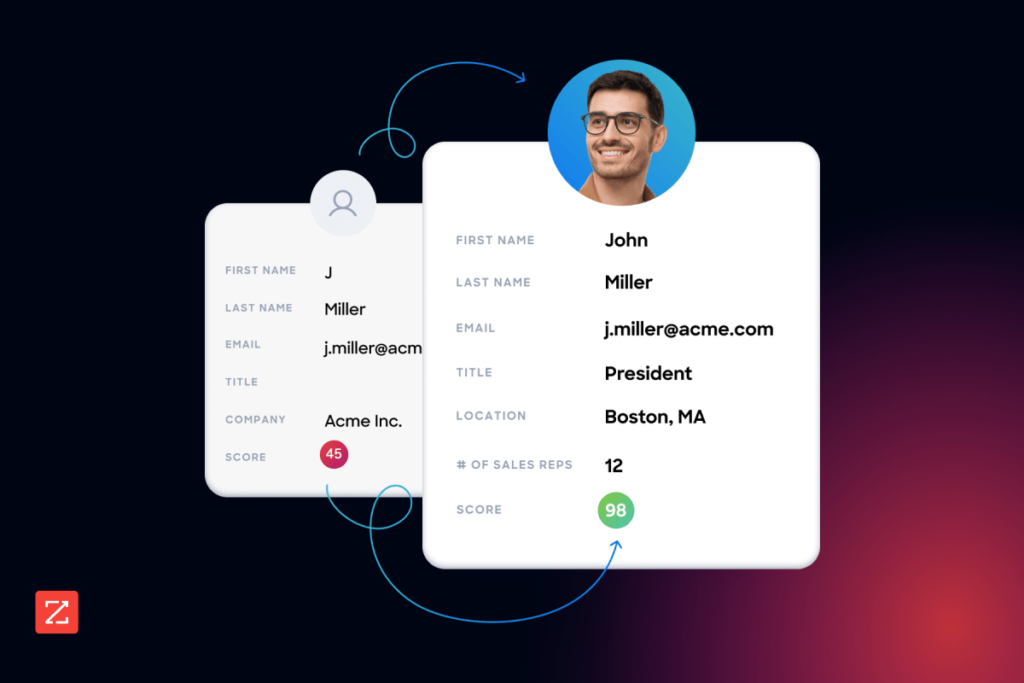Modern business is fueled by a constantly expanding, increasingly complex body of data.
This makes data governance — managing the data produced, acquired, and used by a company — a pivotal function.
A comprehensive data governance strategy is essential to addressing data reliability, security, privacy, and access, all of which are key to maximizing the value of a company’s data assets.
The building blocks of a data governance strategy include:
A strong team with well-defined roles
A healthy policy framework
A culture of collaboration that prizes high-quality data
When these elements come together, data governance becomes a competitive advantage for your business.
What is Data Governance?
Data governance is the principled management of the data lifecycle — from acquisition to disposal and everything in between. It involves every activity a business takes to ensure the security, data privacy, accuracy, availability, and usability of data.
Effective data governance is essential to:
Data Governance vs. Data Management
The terms “data governance” and “data management” are often used interchangeably, but they are different.
Data governance involves overseeing standards regarding the availability, usability, integrity, and security of the data used and produced in a company. Proper data governance encompasses the processes, roles, standards, frameworks, and metrics needed to ensure the effective and efficient use of data.
In other words, data governance is the higher-level framework that guides data management, whereas data management is the actual “boots on the ground” maintenance of that same data, key to driving go-to-market (GTM) execution and uncovering business insights.
The Importance of Data and How Quality Impacts Governance
As technology to collect, parse, understand, and apply data becomes smarter and more readily available, chief data and analytics officers (CDAOs) or chief data officers (CDOs) who oversee data governance will have an increasing impact on their businesses.

The proliferation of analytical and data governance tools is also increasing the quality of the data that businesses can access. This is important because together data quality and data governance ensure sound data management — an equally important part of data stewardship and measurement.
“Data quality is about the data and metadata itself and its completeness and accuracy. Data governance is more about access and change control,” says Kevin Burr, director of product management at ZoomInfo.
A lack of high-quality, trustworthy data undermines data governance processes. These qualities are interdependent.
According to Burr, good governance ensures data access and management is controlled, monitored, and understood.
“If you can’t measure the quality of a dataset — or if you can, and know it’s low quality — no matter how much governance you throw at it, you’re still left with low-quality in, low-quality out,” says Burr.
Data quality is interconnected with data governance success in a variety of ways:
Measuring contact data quality and how it affects customer retention and customer lifetime value.
How your data ecosystem directly contributes to revenue based on accurate data usage, ingestion, and compliance metrics.
How well your data is delivered across your tech stack to drive growth.
Together, the quality of data and a flexible data governance strategy create a strong foundation for accelerated growth.
Need help determining your data quality? Download Understanding Data Reliability: How to Evaluate and Measure the Quality of Your Data.

Benefits of a Strong Data Governance Model
If you don’t already have the groundwork for a data governance framework in place, these four benefits are why you should consider one.
Improved Data Quality
Data policies and processes that help companies organize, manage, and use data more cost-effectively also improve poor data quality. By establishing good data governance, companies can detect and resolve quality-related problems fast, improving their bottom line.
Quicker, Better Business Decision Making
Data governance democratizes accurate data. In turn, this aids your team in swiftly locating top-notch information and its context, improving comprehension. The result is decision-making that isn’t just quicker but more informed and more accurate.
Data Visibility and Awareness
Comprehensive data governance brings greater insight and visibility to your overall dataset. This can increase awareness of industry trends, making it easier to establish priorities and boost your competitive edge.
Greater visibility also contributes to your business culture. Effective data governance requires buy-in, collaboration, and participation from all levels.
Ensured Compliance with Regulations
Good data governance improves regulatory compliance. Correct data governance includes assessing and accommodating data laws and compliance requirements like the General Data Protection Regulation (GDPR).
Common Data Governance Challenges
As important as governing high-quality data is, there are still challenges to be aware of.
Trouble Defining Value and Aligning on Responsibility
Though data touches virtually every part of an enterprise, businesses are often unsure of the value of data governance, and unsure of who should be responsible.
Data governance challenges include:
Varied understanding of governance information
Lack of leadership
Limited resources
Low data literacy across the business
A lack of cross-team alignment and transparency on common goals
Data Getting Stuck in Silos
Siloed data prevents the free flow of information. This means hidden data that can’t be managed, updated, or have its impact measured appropriately.
Data silos limit your ability to make the right data-driven decisions, follow through with governance policy, and access data for stewardship purposes.
Evolving Security and Privacy Requirements
Ensuring data security is a large, complex task. Data governance committees are responsible for the security, privacy, and proper use of all collected data, while data stewards are responsible for checking and confirming that data is used with appropriate security measures.
Companies must comply with complex data privacy regulations, both nationally and internationally. Falling short of these can mean legal repercussions, fines, and loss of customer trust.
Capable Change Management
As data evolves over time, data governance teams must adapt processes to maintain the accuracy and reliability of data. This requires careful planning and execution to ensure the right data is delivered to the teams that need it.
Without a flexible approach to data governance, change management becomes increasingly difficult.
Lack of Data Monitoring Tooling
According to Gartner, 42% of data and analytics leaders aren’t assessing, monitoring, or measuring their data governance efforts.
Without rich data and analytics tools, data teams miss out on making better, faster data-driven decisions. For example, if you monitor data quality over time, you can check the effectiveness of data governance policies as they are introduced.
“If a governance policy is introduced at a certain baseline and the quality drops without other changes, then one can infer the governance process is flawed,” says Burr.
How to Create an Effective Data Governance Framework: 8 Core Components

To build a modern data governance framework, consider the following components to position data as a competitive advantage:
1. Data Governance Objectives
A data governance strategy can only be as strong as the objectives that guide it.
Once you clarify the “why,” focus on the “what” (such as governance roles) and the “how” (bringing these components together in a governance roadmap) that bring quality data governance to life.
The objectives for your data governance framework should align with business objectives. For example, shortening the sales cycle is a strong business objective that may be aided by eliminating silos.
Other goals for data governance may look like:
Reducing risks, downtime, and penalties by beefing up data governance.
Driving faster, more accurate decision-making with an enterprise data governance program that ensures data trustworthiness.
2. Capability Assessments
The 2022 Gartner CDAO Survey revealed that low data literacy is a huge stumbling block for data-driven organizations.
Use capability assessments to find knowledge and skill gaps and understand each team member’s data literacy. Then put a plan in place to upskill everyone before investing in data assets that they won’t be able to use.
Capability assessments can also help CDAOs identify key hires who will fill holes in the data governance plan.
3. Strong Data Governance Policies
It’s necessary to define how data is used and managed in a company, who is responsible for data stewardship, how decisions are made about its usage, and how users are expected to interact with that data.
4. Powerful Data Security
The specific security needs of a company will vary depending on the type of data being protected and the team’s business goals. However, some elements are essential for securing data in a successful data governance program:
Data classification allows the company to determine which data is sensitive and requires protection.
Access control ensures only authorized personnel can access sensitive information.
Encryption securely stores and transmits data, ensuring only the intended personnel access it.
Security events and alerts notify responsible parties in the event of a violation.
Auditing and testing makes sure systems remain effective and up to date.
5. Data Integration
Crafting a data governance framework requires proper data integration across systems and management that meets the quality and security standards set by the organization.
In other words, it’s important to show how the data you buy impacts performance.
“Whether it’s new revenue, cost savings, efficiencies, whatever. I need to be able to correlate results to contributory assets to show I’m going to have ROI on my data,” Burr says.
Curious about leveraging data effectively in your GTM motion? Learn how to use data-as-a-service (DaaS) to solve GTM challenges in 8 Ways Teams Use Data-as-a-Service to Drive Go-To-Market Success.
6. High Data Quality Standards
Establish a set of standards related to accuracy, completeness, and consistency that ensure your data is of the highest quality. This is where data orchestration comes in.
Instead of introducing slowdowns and human error by tracking this manually, add data orchestration tech to your governance software stack to optimize the revenue-readiness of your data.

7. A Culture That Values and Celebrates Data
Data governance initiatives thrive in an environment where data is valued. Data leaders must connect everyone in the organization to training to understand data and the role it plays in the continued success of the business.
8. Regular Data Governance Reviews
Set up a regular review of the data governance strategy and processes to ensure they align with the company’s objectives — including assurances that the data remains high-quality and secure.
Data Governance Roles
Running a comprehensive data governance practice requires multiple team members, and may span business units.
Effective data governance typically includes the following roles:
Data Steward
The data steward is responsible for setting and enforcing data governance policies, as well as ensuring that data is managed correctly and consistently across the business. They’re also responsible for establishing data-quality standards, facilitating secure data storage, and monitoring data usage.
Data Architect
Data architects oversee the design and implementation of data systems. Data models are developed, data mappings are created, and data warehouses are designed in this role. Data architects also work with data stewards on policy and regulatory compliance.
Data Analyst
Analyzing and interpreting data to glean insights and understand trends are some of the responsibilities of a data analyst. This role also includes tasks like data cleansing, data mining, and developing predictive models.
Data Manager
The data manager’s job includes creating and maintaining data warehouses, ensuring data integrity, and securing data availability. They also interface with the data steward on implementing and abiding by data governance policies.
Business Analyst
It falls to the business analyst to understand the business requirements of data and translate those into data governance standards. Identifying gaps in data governance and documenting the process for data governance also make up their responsibilities.
Data Governance is Indispensable for Successful Data-Driven Businesses
An effective data governance program provides a bedrock for business leaders to make data-driven decisions and build effective GTM strategies.
“Ultimately, any company’s growth is made up of the success of people, process, and technology,” Burr says.
By establishing clear data quality rules, procedures, and protocols for data usage, data-driven organizations can ensure their data is secure and used appropriately — ultimately enabling them to reach their goals.


